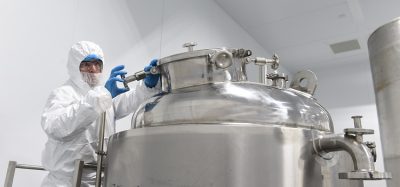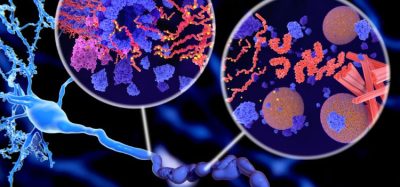Oncolytic viruses: past and present
Posted: 25 August 2022 | Yan Michael Li MD PhD | No comments yet
It is difficult to treat cancer effectively without causing adverse side effects. In this article, Dr Li, Clinical Assistant Professor at the State University of New York and Board Director of ExonanoRNA, describes how an old strategy that never got off the ground has finally been leveraged to deliver safe, effective therapy for one of the most devastating types of cancer: glioblastoma.


IN 2022, treating glioblastoma (GBM) remains an uphill battle. Current therapeutic options show limited success and neuro-oncology teams often struggle to balance their benefits with a patient’s quality of life. Cutting-edge strategies, however, are now revisiting the use of oncolytic viruses – viruses that selectively infect and kill cancer cells – which may broaden and advance the therapeutic landscape. This strategy has failed to gain a foothold in the past as the patient’s immune system interferes, destroying the unprotected oncolytic viruses. Now, clinical trials are assessing an allogeneic therapy for glioblastoma called NeuroNova, which maximises the power of an oncolytic virus by hiding it from the patient’s immune system within stem cells. Promising Phase I results suggest that it may soon represent a powerful tool for the treatment of this devastating disease.
The current standard of care
GBM is a fast-growing, malignant primary brain tumour. It is also the most common primary brain tumour found in adults.1 The current standard of care is an aggressive treatment regimen to match the pace of this aggressive disease. However, patient survival rates remain low, with the standard of care delivering a progression‑free survival of just 6.9 months and a median overall survival of about 14.6 months.2
Upon diagnosis, initial treatment consists of debulking the tumour via surgical resection; however, the location of the tumour dictates the effectiveness of this tactic.3 It is inadvisable to operate when a tumour has grown in a region of the brain vital to quality of life, such as those essential to motor and speech. Even if resection is successful, GBM invariably relapses at the resection margin. Any remaining invasive cancer cells may initiate this recurrence.
the promise of leveraging oncolytic viruses stands out because of their excellent safety profile, minimal predicted side effects and potent ability to kill cancer cells while leaving healthy cells unscathed2
After surgery, strategic combinations of radiotherapy, chemotherapy like temozolomide, and other forms of treatment, such as immunotherapy or the use of an electric field cap, are employed. While each phase of treatment gives some patients more time, not all patients benefit, side effects are often severe, and the disease almost always prevails. For example, radiotherapy and chemotherapy together entails up to six month‑long cycles of daily treatments that cause severe nausea, vomiting and dizziness.3 Because current treatment options are so time‑consuming for patients and detract significantly from their quality of life, scientists are constantly working to develop more effective, better-tolerated approaches to complement or advance the standard of care. Here, the promise of leveraging oncolytic viruses stands out because of their excellent safety profile, minimal predicted side effects and potent ability to kill cancer cells while leaving healthy cells unscathed. Importantly, the oncolytic virus treatments have non-overlapping mechanisms of action with the standard of care, as well as non-overlapping toxicity profiles. Therefore, combination treatments with oncolytic viruses are very promising in this hugely difficult‑to-treat indication.
Reviewing the track record of oncolytic viruses
While oncolytic viruses do occur in nature, those used as therapies are typically engineered in a lab. Modifications are designed to enhance therapeutic qualities; for example, introducing a P53 transgene to give the oncolytic virus additional tumour‑suppressing activity.4 Oncolytic viruses can cause two kinds of anti-tumour activity: first, they directly infect and destroy tumour cells and second, the viral particles and cellular debris may activate the immune system to seek and destroy any remaining cancer cells within the body.
Over the years, many researchers have explored how to leverage these viruses to produce new cancer therapies. One of the earliest reports of the therapeutic value of the oncolytic virus came from George Dock, AM, MD in 1902 wherein he described how a woman with myelogenous leukaemia went into remission after being infected with the flu.5 The field was highly active in the decades that followed. Key research focused on how to make oncolytic viruses better cancer killers, exploring genetic factors regulating tumour specificity,6 as well as cytotoxicity and antitumour activity.7 Studies also sought to modify oncolytic viruses with additional genes that more efficiently recruit the patient’s immune system to target tumour cells. However, time and again, the viruses killed cancer cells in a dish, but when they were injected directly into a patient they were immediately deactivated by the patient’s immune system before they could have an effect. This persistent roadblock prevented these foundational studies from translating to the clinic.
While many different viruses can be oncolytic, adenoviruses were a popular vector for oncolytic viral therapy because of their excellent safety profile, established over decades of clinical work. Unfortunately, high-profile clinical tragedies in the 1990s involving adenovirus vectors halted clinical research of viral therapies across the board.8 However, behind the scenes, oncolytic virus research continued, honing the viruses to be even safer and more targeted. The remaining missing piece of the puzzle has been how to shield them from destruction by the immune system.
After decades of research into naked oncolytic viruses, one of the most promising strategies in the field today takes a fresh approach. By packaging the oncolytic virus into stem cells, like a trojan horse, the cells protect the virus from the immune system until they arrive at the tumour site.
The combined power of stem cells and oncolytic viruses
Several features make stem cells an ideal vehicle to carry the oncolytic virus. Stem cells’ safety profile is well-established in human therapies. In this application, they further reduce the mild cold- and flu-like symptoms of the naked oncolytic virus to make an even more tolerable cancer therapy.
Oncolytic viruses can cause two kinds of anti-tumour activity: first, they directly infect and destroy tumour cells and second, the viral particles and cellular debris may activate the immune system to seek and destroy any remaining cancer cells within the body”
In addition to an excellent safety profile, combining stem cells with oncolytic viruses creates a therapeutic effect that is greater than the sum of its parts. During the manufacturing process, the oncolytic virus amplifies within the stem cells, essentially using the cells as a mini factory in which to replicate. Importantly, all virally encoded proteins, both natural and engineered, are being produced and stored inside the stem cells. Therefore, the final drug product contains not only stem cells and oncolytic viruses, but also virally encoded proteins and stem cell-produced proteins, including potent immune modulators. Furthermore, the frozen drug product has a very long shelf life and can be safely shipped to any clinic in the world where, following a simple thawing procedure in the clinic, the drug is administered to the patient. Upon reaching the tumour, the viral payload is released together with a number of potent immune modulators, immediately altering the tumour microenvironment. The virus selectively infects and destroys tumour cells on-site, including chemotherapy-resistant tumours. A second wave of anti-tumour activity is then triggered with the release of particles from the destroyed tumour cells. This trains the patient’s immune system to recognise and destroy any distant tumour sites, including potential future metastases.
Putting this approach into practice, Calidi Biotherapeutics is developing novel, clinical-stage immunotherapies consisting of oncolytic virus potentiated within allogeneic stem cells. One of their therapies, NeuroNova (NNV), is designed for the treatment of GBM and has shown promising results in a Phase I clinical trial.9
NeuroNova in action
Clinical results of NNV found the therapy to be safe and well-tolerated. It has also shown signals of efficacy, though it is early days. The study demonstrated that NNV could be integrated seamlessly, as needed, with the current standard of care. The dose-escalation trial consisted of 12 patients with newly-diagnosed GBM. Following tumour removal, NNV was injected into the surgical margin area. Two weeks later, patients began standard radiation and chemotherapy. Patients’ response to the therapy indicated that the NNV was safe, with no formal dose-limiting toxicity level reached, laying the groundwork for dosing levels and schedules in future Phase II trials.
Encouraging exploratory studies evaluated how a patient’s immune system responds to NNV therapy. Researchers found fluctuating levels of immune cells, cytokines and antiviral antibodies, which suggests the anticipated immune‑mediated anti-glioma and antiviral response is working as intended following NNV treatment. Magnetic resonance imaging (MRIs) performed on patients before and after treatment also revealed a decrease in contrast intensity of the tumour after the therapy, a quality that is generally associated with a less-severe disease. While further studies are needed, initial results suggest that adding NNV to the standard of care may provide a survival benefit; treatment resulted in a median progression-free survival of 9.1 months and overall survival of 18.4 months.
The positive results of this Phase I clinical trial indicate that NNV warrants further clinical study. In addition to exploring NNV’s effects in larger sample sizes in combination with standard treatments, future studies will also explore its use alongside more modern immunotherapies, which carry non-overlapping toxicity profiles. Calidi scientists and collaborators predict this combination could further amplify the effects of each therapy.
A new direction for cancer therapy
Oncolytic virus therapies like NNV represent a potentially groundbreaking tool for cancer therapy. They offer the possibility of highly effective cancer treatment without a massive, negative impact on a patient’s quality of life. While targeting GBM is an important first step (and a major unmet need), this versatile strategy can be adapted to virtually any type of cancer. Recent clinical work using a parallel platform called SuperNova has demonstrated its utility for the treatment of a wide range of solid tumours, as well as blood cancer such as acute myeloid leukaemia (AML).10
As these therapies continue along the drug development pipeline, their efficacy and safety will be subject to ongoing scrutiny. Prospects are hopeful as they are built upon decades of research establishing the incredible power of oncolytic viruses. Finally, with the utilisation of stem cells to protect, amplify and potentiate the oncolytic viruses, the oncolytic virus field can take off and reach its full potential.
About the author
Yan Michael Li, MD, PhD is an award-winning fellowship-trained spine and tumour neurosurgeon who specialises in the treatment of complex spine diseases and brain and spine tumours. He is currently a Clinical Assistant Professor at the State University of New York, Upstate Medical University and the UT MD Anderson Cancer Center, both in the US. Dr Li is also the VP and board director of ExonanoRNA, a platform biotechnology company developing a new class of RNA nanotechnology and Exosome-based therapeutics for cancer treatment. Dr Li received his medical degree from Peking Union Medical College and his PhD from The University of Texas Graduate School of Biomedical Science MD Anderson Cancer Center and Houston Health Science Center. Throughout his career, Dr Li has authored more than 70 scholarly articles in peer-reviewed journals and book chapters such as Cancer Cell, Nature Medicine and JAMA Oncology.
References
- Gilard V, Tebani A, Dabaj I, et al. Diagnosis and Management of Glioblastoma: A Comprehensive Perspective. J Pers Med. 2021;11(4):258.
- Stupp R, Mason WP, van den Bent MJ, et al. Radiotherapy plus concomitant and adjuvant temozolomide for glioblastoma. N Engl J Med. 2005;352(10):987-996.
- Thakkar JP, Peruzzi PP, Prabhu VC. Glioblastoma Multiforme. AANS Patient Pages. Available from: https://www.aans.org/en/Patients/Neurosurgical-Conditions…
- Bressy C, Hastie E, Grdzelishvili VZ. Combining Oncolytic Virotherapy with p53 Tumor Suppressor Gene Therapy. Mol Ther Oncolytics. 2017;5:20-40.
- Dock G. The influence of complicating diseases upon Leukaemia. The Am J of the Med Sci (1827-1924). 1904;127(4): 563.
- Li YM, Song ST, Jiang ZF, et al. Telomerase-specific oncolytic virotherapy for human hepatocellular carcinoma. World J Gastroenterol. 2008;14(8):1274-1279. doi:10.3748/wjg.14.1274
- Du T, Shi G, Li YM, et al. Tumor-specific oncolytic adenoviruses expressing granulocyte macrophage colony-stimulating factor or anti-CTLA4 antibody for the treatment of cancers. Cancer Gene Ther. 2014;21(8):340-348. doi:10.1038/cgt.2014.34
- Sibbald B. Death but one unintended consequence of gene-therapy trial. CMAJ. 2001;164(11):1612.
- Fares J, Ahmed AU, Ulasov IV, et al. Neural stem cell delivery of an oncolytic adenovirus in newly diagnosed malignant glioma: a first-in-human, phase 1, dose-escalation trial. Lancet Oncol. 2021;22(8):1103-1114. doi:10.1016/S1470-2045(21)00245-X
- Minev B, Lander E, Feller J, et al. First‑in‑human study of TK‑positive oncolytic vaccinia virus delivered by adipose stromal vascular fraction cells. J Transl med. 2019;17:271
Issue
Related topics
Anti-Cancer Therapeutics, Biologics, Clinical Development, Clinical Trials, Drug Development, Drug Safety, Drug Targets, Research & Development (R&D), Technology, Viruses








